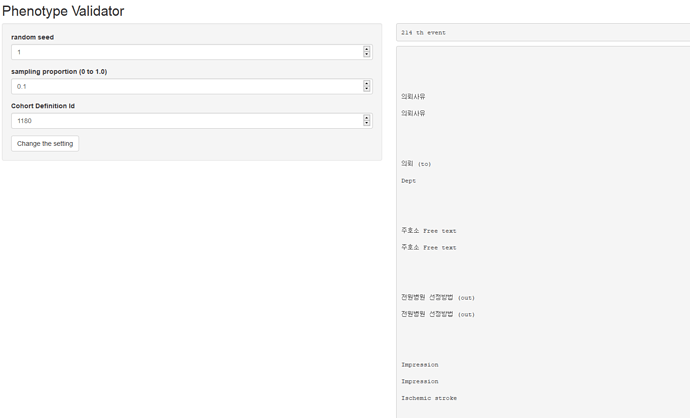I released the process and the result for validation of ischemic stroke phenotype to the Phenotype Library github.
The definition of cohort in json and in sql are available. I used
OhdsiRTools to insert cohort definition from ATLAS.
The condition concept identifiders, included concept ids, source code in ICD-9-CDM and ICD-10, and additional constraints (such as ‘first event only’ or ‘all event’, visit_concept_id, and condition_type_concept_id) are also summarized for each cohort at here.
I made very simple and primitive shiny app to visualize discharge note of each subject in the cohort and check the validity of them by manual chart review.
Positive predictive value for ischemic stroke (inpatient or ED) and primary condition was 0.69. Positive predictive value for ischemic stroke (inpatient or ED) and primary condition and first event was 0.81, which is summarized here. In conclusion, I suggest to use the last cohort definition for ischemic stroke (ischemic stroke (inpatient or ED) and primary condition and first event).
I hope this help a community.
I’ll validate the hemorrhagic stroke cohort, too.





